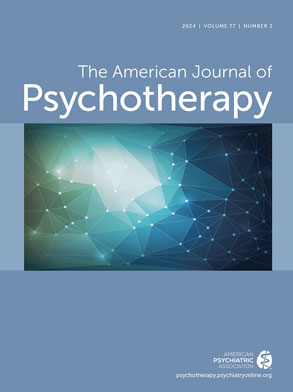The holiday season traditionally is seen as a time for gathering with loved ones and enjoying the company of friends and family. The stark truth, however, is that many spend the holidays alone or describe feeling lonely despite being surrounded by others. According to the former U.S. surgeon general Vivek Murthy, loneliness has reached epidemic proportions. Dr. Murthy (
1) wrote, “During my years caring for patients, the most common pathology I saw was not heart disease or diabetes. It was loneliness.” Loneliness can be measured with a standardized assessment (
2) and is associated with significant individual and societal costs (
3).
Loneliness affects millions of lives annually and is associated with poor general and mental health outcomes. Characterized by feelings of isolation, disconnectedness, and not belonging (
2), loneliness is very common. Approximately one in 12 individuals is affected by loneliness (
4), rising to one in four in late life. Loneliness is associated with increased risk for cardiovascular disease (
3), a 26% increase in risk of premature mortality (
5), and poor mental health outcomes, especially depression (
3). Because of the immense social and health costs associated with loneliness, advancement of social connections has been identified as a public health priority in the United States (
6) and other countries. In 2018, the United Kingdom appointed its first minister of loneliness to address this public health emergency (
7).
As psychotherapists, we may be well positioned to identify and address some of the risk factors associated with the loneliness epidemic. Readers of the American Journal of Psychotherapy practice a wide range of therapy modalities, and many of these approaches would probably be helpful to those with high levels of loneliness. Because loneliness is not a psychiatric disorder, most psychotherapies have not been directed toward this problem specifically, and yet many psychotherapeutic techniques are well suited to address the behavioral, interpersonal, cognitive, and emotional correlates of loneliness. For instance, behavioral therapists could use exposure strategies to help isolated individuals gradually increase their levels of social engagement. Interpersonal psychotherapists could use communication analysis to help individuals understand and ultimately modify maladaptive communication patterns that contribute to social isolation and relationship difficulties. Cognitive therapists might help patients identify and modify inaccurate thinking about relational patterns or challenge distorted beliefs about being evaluated by others in social contexts. Psychodynamic psychotherapists might explore how early childhood experiences contribute to social isolation later in life, seeking to help the patient develop insight into unconscious relational patterns and defenses associated with loneliness. Of course, systematic studies of psychotherapy for loneliness are greatly needed, but the application of a range of psychotherapies for loneliness seems reasonable at face value.
As the holiday season approaches, we as psychotherapists should pay attention to loneliness. Therapists can identify loneliness as a problem, work collaboratively to expand patients’ social networks, and address feelings of not belonging. Recognizing that seasonal messages of togetherness may be especially challenging for those who suffer from loneliness, our radar should be attuned to those who do not seek therapy yet might benefit from it, such as those seen in emergency rooms or evaluated in consultation-liaison settings. Many of the varied psychotherapies used by our readership could easily be adapted to address the needs of this patient population.
Loneliness is a public health crisis, and psychotherapy may play an important role in addressing it. Psychotherapy is, after all, among the most human of therapeutic endeavors and therefore may be particularly well suited to meet the needs of those who feel cut off or isolated from human connections. Especially during the holiday season, our therapeutic priorities should include the identification and amelioration of loneliness.

